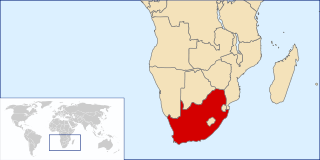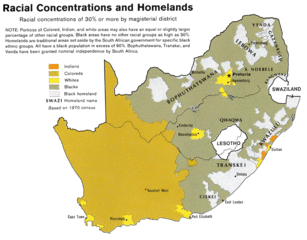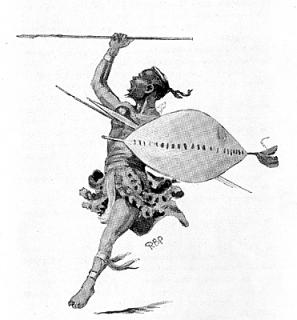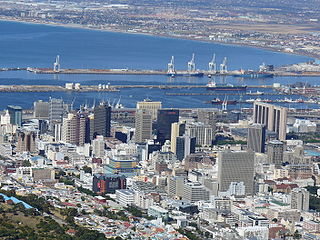
Exploring the history and experiences of mixed heritage persons and inter-racial relationships across the world

Exploring the history and experiences of mixed heritage persons and inter-racial relationships across the world
 Proving the ‘rainbow nation’ status that it is, South Africa has eleven official languages; nine of these are spoken by the some 80% Bantu African population, Afrikaans – a Dutch like dialect and English and has the largest communities of European, Asian, and racially mixed ancestry in Africa.
Proving the ‘rainbow nation’ status that it is, South Africa has eleven official languages; nine of these are spoken by the some 80% Bantu African population, Afrikaans – a Dutch like dialect and English and has the largest communities of European, Asian, and racially mixed ancestry in Africa.
 South Africa’s large mixed population are called Coloureds. Unlike other parts of the world, this term is not regarded as derogatory and is proudly born all over Southern Africa. The Coloureds make up nearly 8.8% of the current population and they are the predominant population group found in the Western Cape Province at about 4 million strong. The predominance of this group in this part of South Africa is historical. This is where the first European settlers came into contact with the indigenous people of the region, the pastoral Khoikhoi. The Khoikhoi and their closest relatives, the San people, and are collectively referred to as Khoisan. Both peoples had names that are now considered inappropriate, the Khoikhoi being labelled Hottentots, now considered a derogatory term, and Bushmen being used for the San. Archaeological evidence suggests that modern humans have lived in Southern Africa for at least 170,000.
South Africa’s large mixed population are called Coloureds. Unlike other parts of the world, this term is not regarded as derogatory and is proudly born all over Southern Africa. The Coloureds make up nearly 8.8% of the current population and they are the predominant population group found in the Western Cape Province at about 4 million strong. The predominance of this group in this part of South Africa is historical. This is where the first European settlers came into contact with the indigenous people of the region, the pastoral Khoikhoi. The Khoikhoi and their closest relatives, the San people, and are collectively referred to as Khoisan. Both peoples had names that are now considered inappropriate, the Khoikhoi being labelled Hottentots, now considered a derogatory term, and Bushmen being used for the San. Archaeological evidence suggests that modern humans have lived in Southern Africa for at least 170,000.
The Portuguese explorer Bartolomeu Dias and his crew are regarded as the first Europeans to have sighted the Cape in 1488 which he named Cabo das Tormentas (Cape of Storms). This was later changed to Cabo da Boa Esperança or Cape of Good Hope by the Portuguese King John II. After this, it is probable that many European excursions to the East Indies stopped at the Cape for refreshments. These Europeans came into contact with the pastoral Khoikhoi, despite Afrikaner historian claims to the contrary, and in many cases the encounters were violent.
It was over 150 years later that Jan van Riebeeck on behalf of the Dutch East India Company established a settlement at the Cape of Good Hope which became Cape Town. The Europeans brought with them the curse of the Old World, smallpox, to which these indigenous people had no immunity and despite the continuing conflict with the Khoikhoi, the beginning of what was to become the coloured community happened around this time. As usual, the early settlers were mostly men and they took up with Khoikhoi women who bore them mixed children. Like in most colonies, particularly Dutch ones, these mixed children were elevated a step up from natives and obtained certain ‘privileges’. However they did not obtain the social or legal statuses of their fathers. These early mixed children came to be known as Basters or Baasters (bastards) and the colonialists were not averse to conscripting these offspring into commandos to fight against their mother’s people.
The constant demand for fresh produce by the passing ships mean that the settlers had to expand into Khoikhoi territory and it is believed that some of the Dutch East India Company’s employees were released from their contracts in exchange for land for farming. These new farmers were successful and many took on local wives. Additionally, the Dutch were importing slaves from Indonesia, Madagascar and India for the new colonialists. Slaves were interbred and the women bore children both to the Europeans and other slaves fuelling the growth of the Cape Coloured community.
At the time of European contact, the Khoikhoi were being pushed south and westwards by the migrating Bantu peoples who were not only pastoral but also an advanced Iron Age culture giving them a large advantage in the competition for resources particularly land and food. Eventually the expanding European colony met the advancing Bantu peoples, the ancestors of today's Nguni peoples (the Zulu, Xhosa, Swazi, and Ndebele) in the region of the Fish River in what is now the Eastern Cape. This resulted in a series of nine wars from 1779 to 1879 known as the Xhosa Wars or Cape Frontier Wars resulting in the losses of land for the Xhosa people.
Whilst this expansion was in progress, in Europe the French had invaded the Dutch Republic and Britain fearing the loss of a refuelling station took over the Cape colony in 1795 but returned the colony to the Dutch East India Company in 1803. The company finally declared bankruptcy and the British annexed the colony in 1806 and continued the frontier wars with the Xhosa.
 Britain’s continuing policy of banning slaves and their continuing rule saw a group of disgruntled South African Dutch people, the Boers, migrating North during the 1830s and 1840s. These Boers numbering some 12,000 and later known as the Voortrekkers, founded the two Boer States; the South African Republic and the Orange Free State in the vacuum left by Shaka Zulu’s Mfecane (“crushing”) of the other tribes in the interior.
Britain’s continuing policy of banning slaves and their continuing rule saw a group of disgruntled South African Dutch people, the Boers, migrating North during the 1830s and 1840s. These Boers numbering some 12,000 and later known as the Voortrekkers, founded the two Boer States; the South African Republic and the Orange Free State in the vacuum left by Shaka Zulu’s Mfecane (“crushing”) of the other tribes in the interior.
Whether due to the continuing wars, British rule or continuing inequality, a group of the Basters left the Cape in 1868 to trek northwards near the Orange River, just west of the Orange Free State, and on the southern skirts of the Transvaal. It is not very clear whether this original ‘mixed race’ group included any of the newer mixed race offspring stemming from the slave communities but it is certainly likely. The original immigrants were followed by a steady stream of more disgruntled, Dutch-speaking, trained Baster soldiers and farmers. Some Basters came to call themselves Oorlam, sometimes known as "Orlamse Hottentots" and they and some other Baster groups continued their northward trek and settled in Rehoboth in central Namibia were they are mainly known as Rehobothers or Rehoboth Basters. The Oorlams assimilated to Nama culture after their migration to Namaqualand and Damaraland in Namibia. The Nama are the largest and only surviving distinct group of the Khoikhoi people.
The Basters that remained in the Orange river area were eventually persuaded by London Missionary Society (LMS) to call themselves Griqua because the English found the Baster name offensive. This term was related to a the word Chariguriqua (Grigriqua)which had been used before to have been used as early as 1730 for a mixed race group living in the north-eastern section of the Cape Colony who apparently had a common ancestor named Griqua. They founded Griqualand West, now Griekwastad but also known as Griquatown; and controlled it until the influx of Europeans accompanying the discovery of diamonds in 1867. Determined to maintain a Griqua nation, Adam Kok III led over 2,000 Griquas east to establish Griqualand East but after a few months it was annexed by the Cape Colony in 1874.
 Outside of the Cape region and throughout the rest of Southern Africa, the Coloured mix tended to be white European and Bantu African and most speak a European language which made the Cape Coloureds fairly distinct. Cape Coloureds like to claim, and it is backed up by genetic studies, that they the most racially mixed group in the world. However, those genetic studies have shown that the maternal, the mother’s side (determined by mitochondrial DNA), the greatest contribution has come from the Khoisan.
Outside of the Cape region and throughout the rest of Southern Africa, the Coloured mix tended to be white European and Bantu African and most speak a European language which made the Cape Coloureds fairly distinct. Cape Coloureds like to claim, and it is backed up by genetic studies, that they the most racially mixed group in the world. However, those genetic studies have shown that the maternal, the mother’s side (determined by mitochondrial DNA), the greatest contribution has come from the Khoisan.
The Indian contribution to the Coloured community may have been much higher in the earlier decades but inter-racial mixing with the indentured Indian labour brought to work in the sugar plantations in Natal in the late 19th and early 20th century would have been very limited. These Indians came from different parts of the Indian subcontinent, adhered to different religions and spoke different languages.
The ‘Coloured’ classification was formalised under apartheid and it is not clear, depending on the source, whether the Griqua were considered coloured under the law. Many Griqua did self-identify as Coloured as there were certain advantages to be so classified such as the not having to always carry a dompas, an identity document. The Apartheid Population Registration Act 1950 classified Coloureds into various subgroups which including Cape Coloureds as well as Cape Malays and ‘other coloureds’. Under apartheid, the rights that were once a given for Coloureds were slowly eroded, for example, voting rights were lost in 1970. The Group Areas Act, 1950 allowed the Government to remove many in the Coloured community out of the central and western areas of Cape Town which cumulated, by 1982, in the forced removal of some 60,000 people from District 6 to the dismal Cape Flats housing project.
Coloured support and membership of the African National Congress started before, grew during and continues after apartheid. Despite this, many feel disheartened by the new South African particularly in opposition to affirmative action programmes which many felt failed to protect non-Black interests. In the first universal (post-apartheid) elections in 1994, which the ANC won by an overwhelming majority, many Coloured voted for the white National Party, which had formerly oppressed them. Many did not understand the ramification of such actions and apathy in following elections particularly in 2004 was high in historically coloured constituencies. Since then, Coloured identity politics has continued to be important in the Western Cape.
In March, 2011 there was a large outcry in the press where it had been reported that a chief South African government spokesman, Jimmy Manyi, had insisted there was an “oversupply” of Coloureds in the Western Cape and suggested they “spread in the rest of the country”. It led to the accusation that the government signed off on a Bill that would have had the effect of forcing employers to dump an estimated one million Coloureds in the Western Cape, on the basis that they were not, in fact, Black. No doubt, race is still important in Africa and this will probably not be the last we hear about issues like this.
Trying to understand the politics of the Coloured question is difficult for anyone who does not come from that part of the world. Watching the documentary “I'm Not Black, I'm Coloured”, Identity Crisis at the Cape of Good Hope” by Mondé World Films may be the first step.
LINKS